Absolute values of mean annual temperature and mean annual precipitaion in each ecozone were plotted over the 1901-2002 period. As exptected the Pacific Maritime and the Prairies ecozones have the highest MAT values throughtout the entire period. The Taiga Cordillera, which is the northern most ecozone in the study area has the lowest temperature.
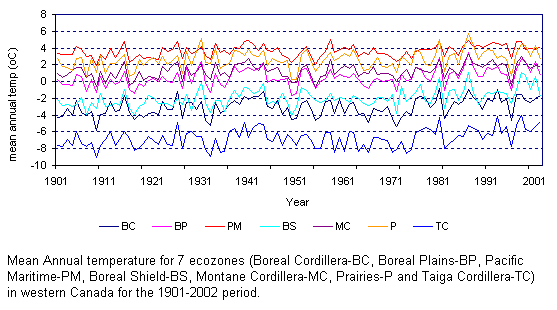
The Pacific Maritime (not i figure) with annual values going to over 11000mm, receives more precipitation than any other ecozone. Despite differences in total amount of precipitaion received, the trend over time seems to be similar in all ecozones.
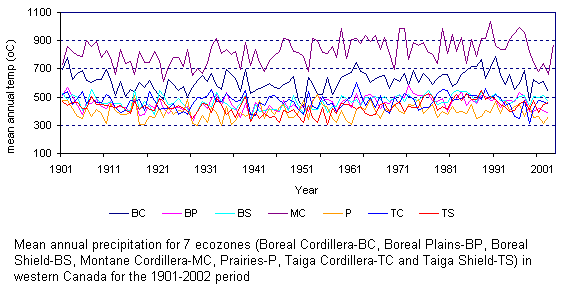
In order to provide a very good visialization of climate change trends in western Canada, deviation of the 1901-2002 annual valules from the 1961-1990 normal were computed for each ecozone. Plot of some of the trends are shown below. Temperature variables exhibit warming trends in all ecozones from 1901 to 2002, whereas precipitation shows a slight reduction at the close of the 20th century.
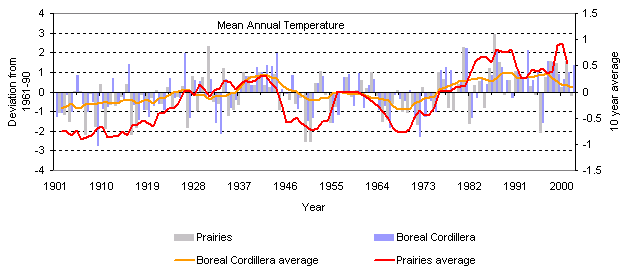
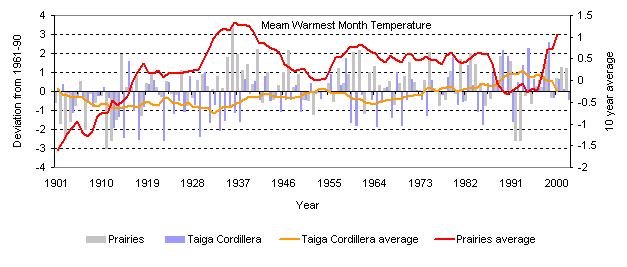
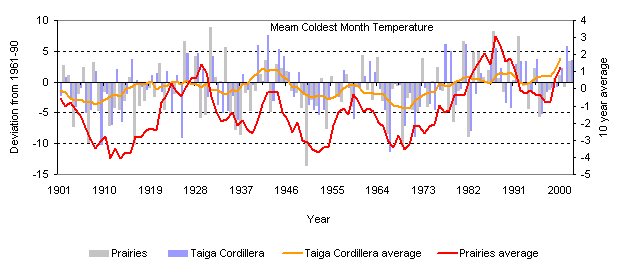
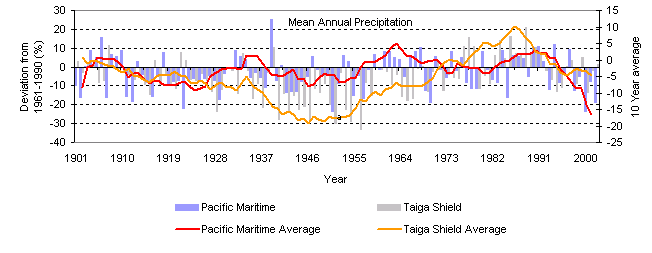
|
